Adjusting the rear seats
Adjusting forward and backward (2nd row seats)
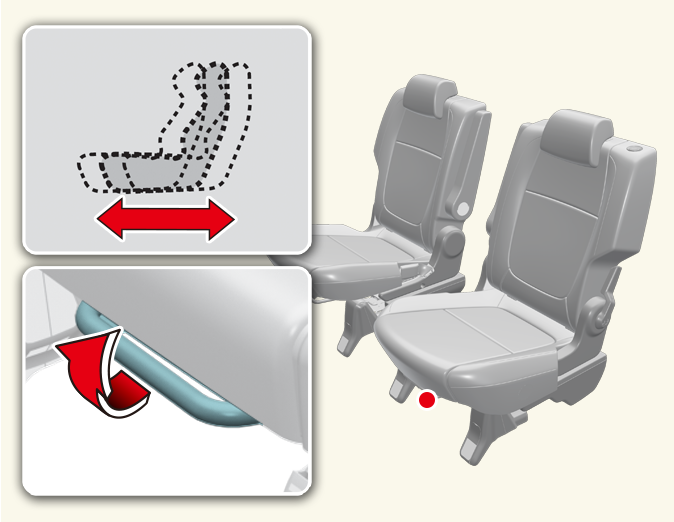
Operation
-
Pull the seat slide adjustment lever up and hold it.
-
Slide the se
at to the position you desire.
-
Release the lever and make sure the seat is locked in place.
Adjusting rear seatback angle (2nd row seats)

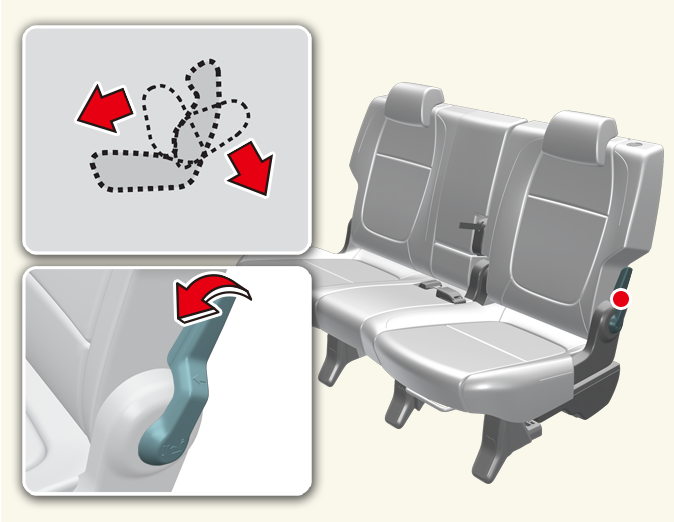
Operation
-
Pull the seatback recline lever.
-
Hold the lever and adjust the seatback of the seat to the position you desire.
-
Release the lever and make sure the seatback is locked in place. (The lever MUST return to its original position for the seatback to lock.)
Adjusting rear seatback angle (3rd row seats)

Operation
-
Pull up the lever.
-
Hold the lever and adjust the seatback to the position you desire.
-
Release the lever and make sure the seatback is locked in place. (The strap MUST return to its original position for the seatback to lock.)
Folding the rear seat (2nd row seats) (if equipped)
Operation
-
Insert the rear seat belt buckle in the pocket between the rear seatback and cushion.
-
Insert the rear seat belt webbing in the guide located on both outer sides of 2nd and 3rd row seat, and insert the metal tab into the guide hole.
-
Set front seat back to upright position and if necessary, slide front seat forward direction before folding seats.
2nd row headrests should adjust to lowermost position before pulling/pushing seat back folding lever.
-
Pull the seatback folding lever (2) or push the seatback folding button (1), then seatback folds automatically.
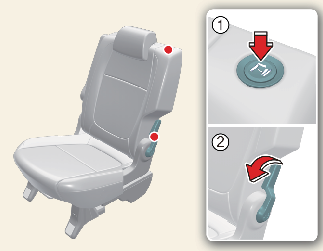
-
Back of the seatback will slightly go up, then lift up the 2nd row seat and set to upright position (vertical position).
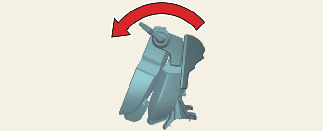
-
To use the rear seat, push down the vertical positioned seat, and pull up the seatback backward firmly until it clicks into place. Make sure the seatback is locked in place.

The seatback folding button (1) will not operate when the vehicle reaches 6 km/h (4 mph) for safety.
Folding the rear seat (3rd row seat) (if equipped)
Operation
-
Insert the rear seat belt webbing in the guide to prevent the seat belt from being damaged.
-
Set the 2nd row seatback to the upright position and if necessary, slide the 2nd row seat forward.
-
Lower the 3rd row rear headrests to the lowest position.
-
Pull on the seatback folding lever, then fold the seat toward the front of the vehicle.
When you return the seatback to its upright position, always be sure it has locked into position by pushing on the top of the seatback.
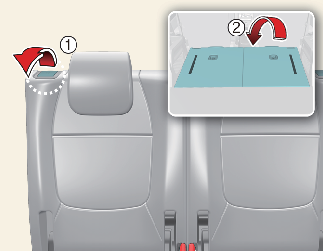
-
To use the rear seat, lift and pull the seatback backward by pulling on the folding lever on the back of the seat. Pull the seatback firmly until it clicks into place. Make sure the seatback is locked in place.
-
Return the 3rd row rear seat belt to the proper position.

-
Never attempt to adjust whilst the vehicle is moving or the rear seat is occupied as the seat may suddenly move and cause the passenger on the seat to be injured.
-
The purpose of the fold-down rear seatbacks is to allow you to carry longer objects that could not be accommodated in the cargo area. Never allow passengers to sit on top of the folded down seatback whilst the vehicle is moving. This is not a proper seating position and no seat belts are available for use. This could result in serious injury or death in case of an accident or sudden stop. Objects carried on the folded down seatback should not extend higher than the top of the front seatbacks. This could allow cargo to slide forward and cause injury or damage during sudden stops.
-
Do not fold the rear seats if passengers, pets or luggage are in the rear seats. It may cause injury or damage to passengers, pets or luggage.

-
When you return the seatback to its upright position, hold the seatback and return it slowly. If the seatback is returned without holding it, the back of the seat could spring forward resulting in injury caused by being struck by the seatback.
-
Cargo should always be secured to prevent it from being thrown about the vehicle in a collision and causing injury to the vehicle occupants. Do not place objects in the rear seats, since they cannot be properly secured and may hit the front seat occupants in a collision.
-
Make sure the engine is off, the automatic/dual clutch transmission is in P (Park) or the manual transmission is in R (Reverse) or 1st, and the parking brake is securely applied whenever loading or unloading cargo. Failure to take these steps may allow the vehicle to move if the shift lever is inadvertently moved to another position.
-
Never attempt to adjust whilst the vehicle is moving or the rear seat is occupied as the seat may suddenly move and cause the passenger on the seat to be injured.

-
When returning the rear seatbacks to the upright position, remember to return the rear shoulder belts to their proper position. Routing the seat belt webbing through the rear seat belt guides will help keep the belts from being trapped behind or under the seats.
-
When you fold the rear seatback, insert the buckle in the pocket between the rear seatback and cushion. Doing so can prevent the buckle from being damaged by the rear seatback.